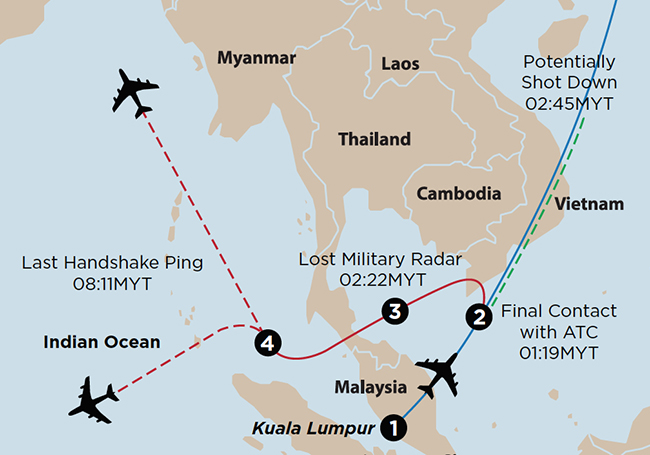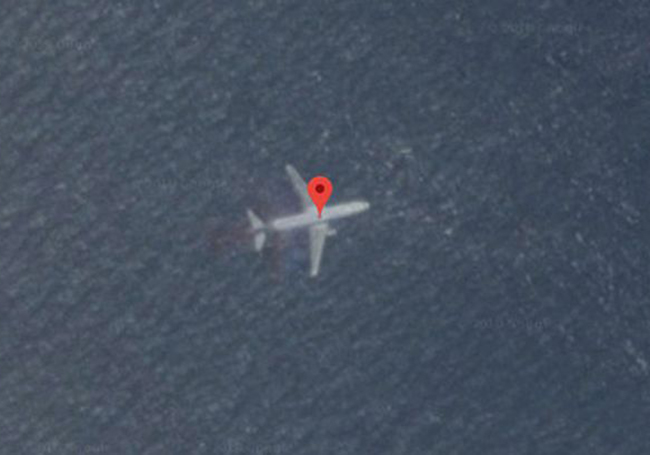
On March 8, 2014, Malaysia Airlines Flight MH370 disappeared en route from Kuala Lumpur to Beijing with 239 people on board. Despite extensive search efforts, no one has found the aircraft, making its loss one of the biggest mysteries in aviation history.
In the years since its disappearance, numerous theories have emerged, some plausible and some far-fetched, about what happened to Flight MH370.
One of the earliest theories was that the aircraft suffered a catastrophic mechanical failure that led to its demise. According to the theory, the aircraft’s transponder stopped sending signals to air traffic control; some experts proposed that the plane experienced a sudden and catastrophic loss of power.

However, investigators quickly debunked this theory when they discovered that someone had manually disabled the aircraft’s ACARS (Aircraft Communications Addressing and Reporting System) just before the transponder stopped sending signals.
Another theory that gained traction early on was the hijacking of the aircraft. Some suggested that the pilot or co-pilot may have intentionally flown the plane off course. In contrast, others speculated that a hijacker or group had taken control of the aircraft. This theory gained momentum when some experts revealed that the plane had abruptly turned off its planned route. Still, investigators could never determine who or what was responsible for the plane’s deviation.
One of the more outlandish theories that emerged after the plane’s disappearance was that a military jet shot it down. Based on satellite images showing a large oil slick in the South China Sea, some experts proposed the theory that the plane had crashed into the sea, causing the oil slick. However, subsequent analysis of the images found that the oil slick was due to the natural seepage from the ocean floor and not the result of an explosion or crash.

Another theory that gained attention was that the plane had been flown to a remote location and landed on a secret runway. Some speculated terrorists might have hijacked the plane and planned to use it as a weapon. However, investigators never substantiated this theory and failed to find any evidence indicating that the plane had landed anywhere.
One more recent theory that has gained traction is that the pilot deliberately crashed the plane. Aviation expert Christine Negroni first put forward a theory arguing that the pilot may have intentionally depressurized the cabin, causing the passengers and crew to lose consciousness, before flying the plane on a pre-determined route until it ran out of fuel and crashed into the ocean.
This theory stemmed from the fact that the pilot had a flight simulator at home and had previously practised flying on a similar route before the flight. However, many experts have criticized this theory as unfounded and speculative, leading to the ongoing controversy surrounding its validity.

Now a new Netflix docuseries, MH370: The Plane That Disappeared, examines several theories about what happened that night.
Louise Malkinson, the director of “MH370: The Plane That Disappeared,” a Netflix docuseries about the plane’s unexplainable disappearance, described it as “the greatest aviation mystery of all time.” Netflix will release the series today, marking the exact ninth anniversary of the incident.
“The Guardian” reported that according to the director, “This is a world where we have mobile phones and radar and satellites and tracking, and so to be nearly nine years down the line … and still have so little is extraordinary.”
People reported that the three-part docuseries examines three of “the most contentious theories,” including a possible hijacking and government interference, to explore what could have happened to the flight.
Despite these efforts, the disappearance of Flight MH370 remains a haunting reminder of the dangers of air travel and the need for continued vigilance and investment in safety measures. As we mark the ninth anniversary since Flight MH370 vanished, we need to remember the significance of aviation safety and the requirement for persistent endeavours to avert comparable tragedies from occurring in the future.
While we may never know what happened to Flight MH370, we can honour the memory of those on board by working to improve aviation safety for all.











